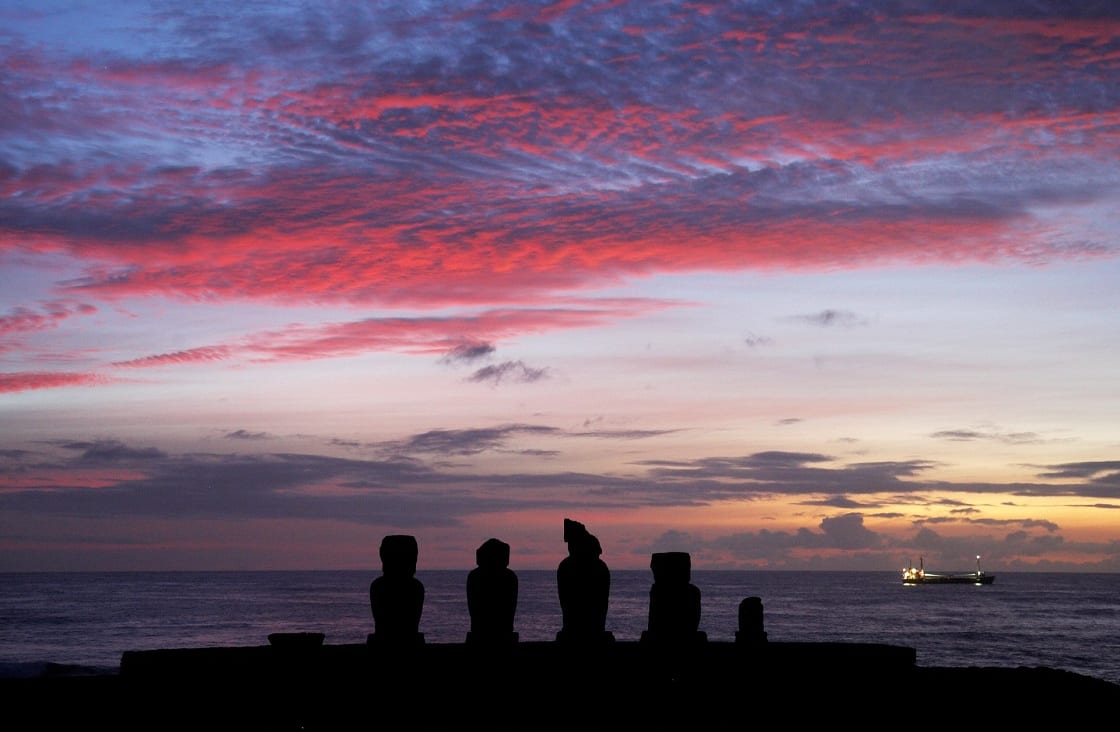
A place that has baffled historians and archaeologists for decades, Easter Island is famous for its 887 extant monumental statues, called moai, created by the early Rapa Nui people. In 1995, it was named a UNESCO World Heritage Site, with much of the island protected within Rapa Nui National Park. Without a doubt, this is one of the most fascinating and mysterious places in not only Chile but the world. Read on to learn about the nine main tourist attractions on Easter Island.
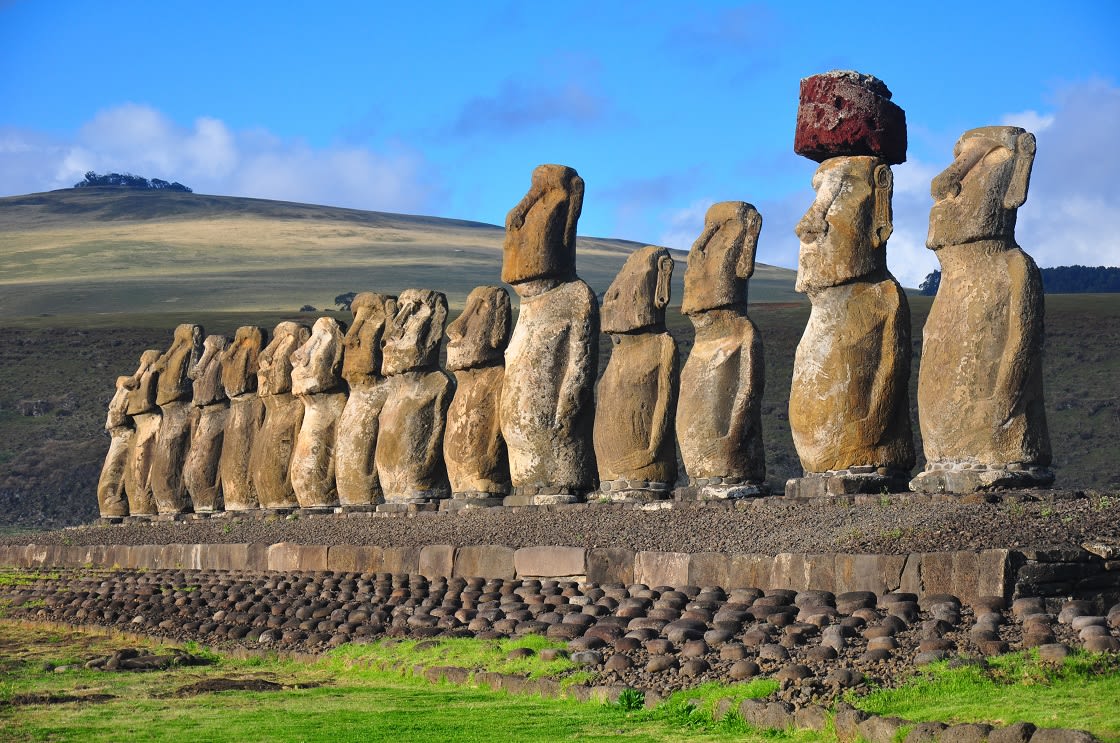
Ahu Tongariki
Of all the ahu on Easter Island, the most prestigious one is Ahu Tongariki, located a short distance from Anakena Beach. It is a striking row of 15 moai elevated on a platform (or ahu). This is one of the most famous Easter Island attractions as well as being an intriguing mystery. No visit to the island is complete without coming to see this ‘skyline’ of figures, which is a spellbinding sight at sunrise. Interestingly, the individual characteristics of these figures are all different, ranging from tall to slim to small, to stylized, with facial characteristics that vary as much as the differences in shape and size. This means they were probably not all carved during the same period.
As is true for nearly all moai, they are handcrafted from hardened volcanic ash and are made up of a head and torso with their arms at their sides and hands clasped together in front. The Rapanui people began carving moai somewhere between 1000-1600 AD as a form of ancestor worship, a common practice throughout Polynesia at the time. When an important member of a tribe on Easter Island died, a statue was crafted at Rano Raraku quarry and then transported back to their village. The moai were placed on a platform overlooking the village as a way of protecting the descendants, which is why Ahu Tongariki is regarded as a sacred site.
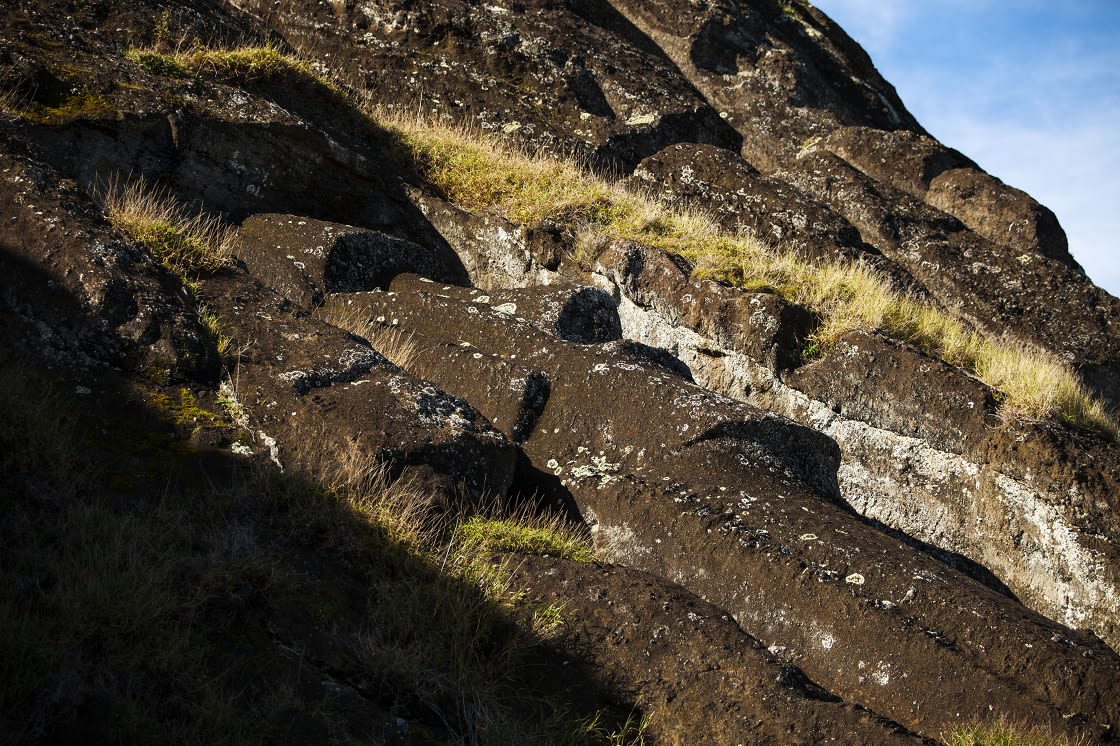
Rano Raraku
When you’re planning what to see on Easter Island, be sure to include Rano Raraku, which is the quarry – you might call it a factory − where all of the island’s iconic stone statues were made. After each statue had been carved it was carefully cut away and moved to its designated final resting place on the island, often many miles away. Today there are 397 moai in the quarry. Some are nearly completed statues almost ready for transportation; others are still in the process of being carved and not yet removed from the bedrock. Today, all of the moai at Rano Raraku remain as they were left when work at the quarry was abandoned. It truly is a glimpse into history.
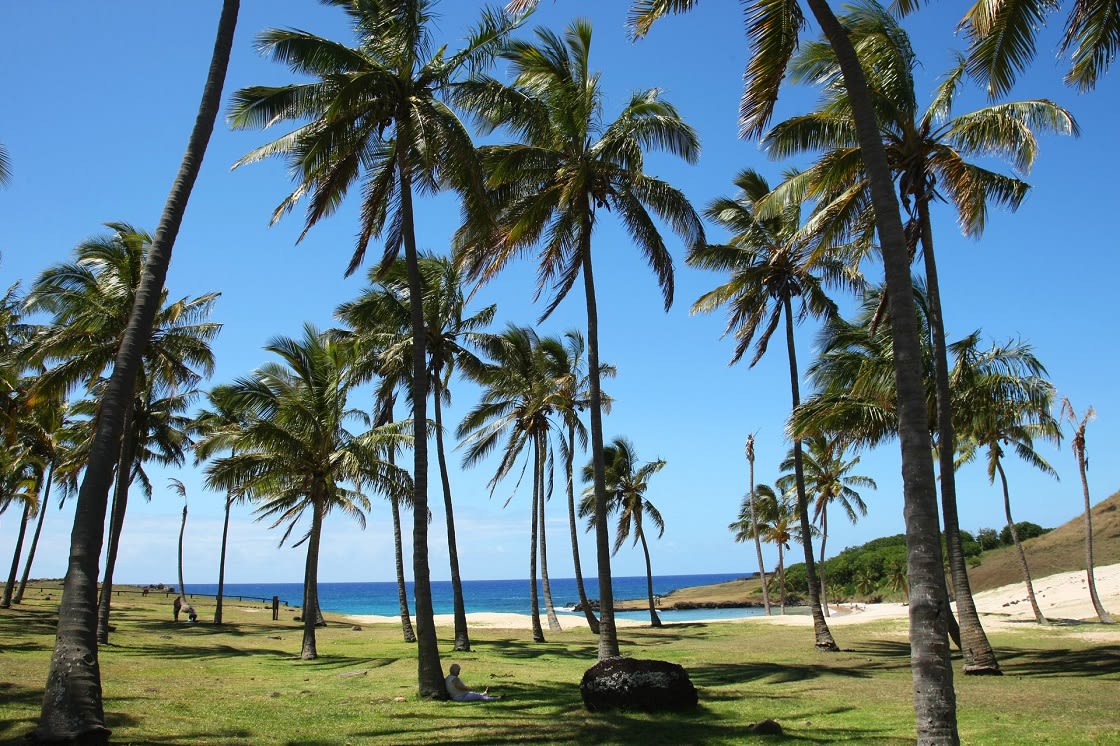
Anakeya Beach
The idyllic Anakena Beach is one of the few sand beaches on the island – and quite paradise-like with its white powder sand, crystalline turquoise waters, coconut palm trees, and a few wild horses, perhaps. Besides being an ideal place for swimming due to the year-round relatively high sea temperatures, Anakena is also a historical site, An ahu with seven moai rises just in front of the beach to create a picture-postcard scene.
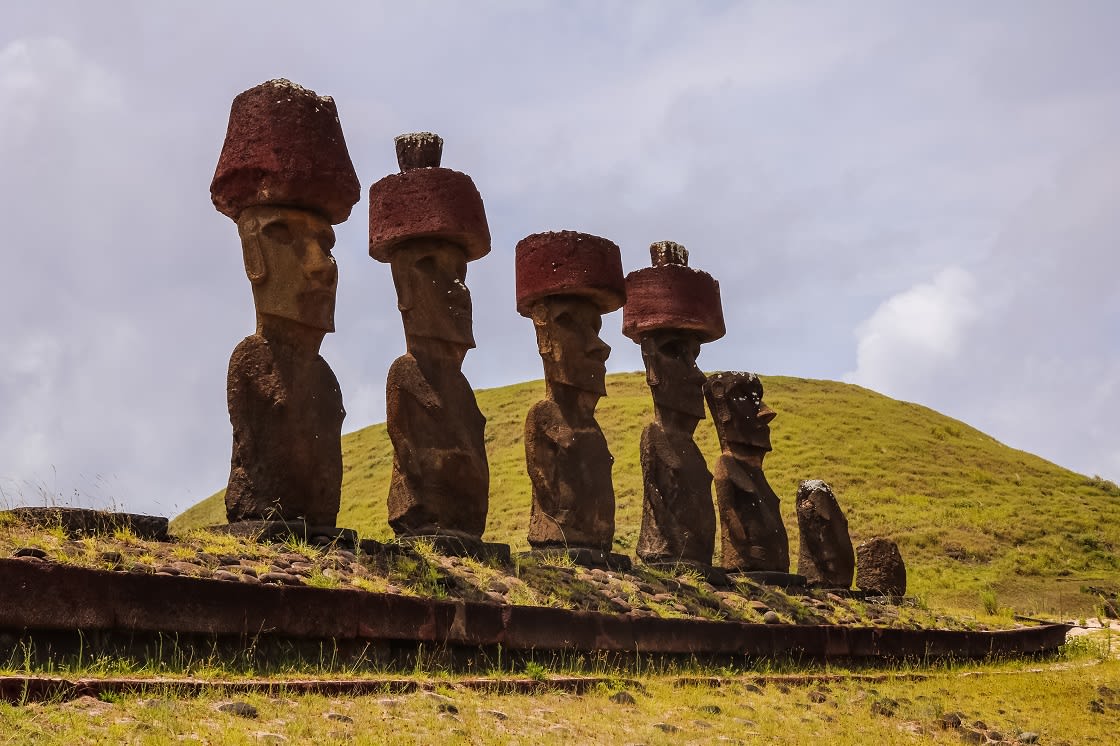
Ahu Nau Nau
Of the seven moais at Ahu Nau Nau at Anakena Beach, four are wearing the red scoria topknots. When the Moai were originally carved and first erected they had sharp features and details but as they weathered some of this detail has been lost. When the statues were knocked down during the clashes between the various clans of the island, they were left buried in the sand on the beach, which allowed them to be more protected from erosion than the others. Therefore, a lot of the detail has been preserved. Being made of a softer material than the statues, the topknots were more prone to be damaged when the Moai were toppled. Again, it may be the surrounding sand that protected these topknots when they fell and allowed them to remain in good condition until they could be restored to their former positions. Therefore, except for their missing eyes, these Moai look very much like they did when first placed on the Ahu centuries ago.
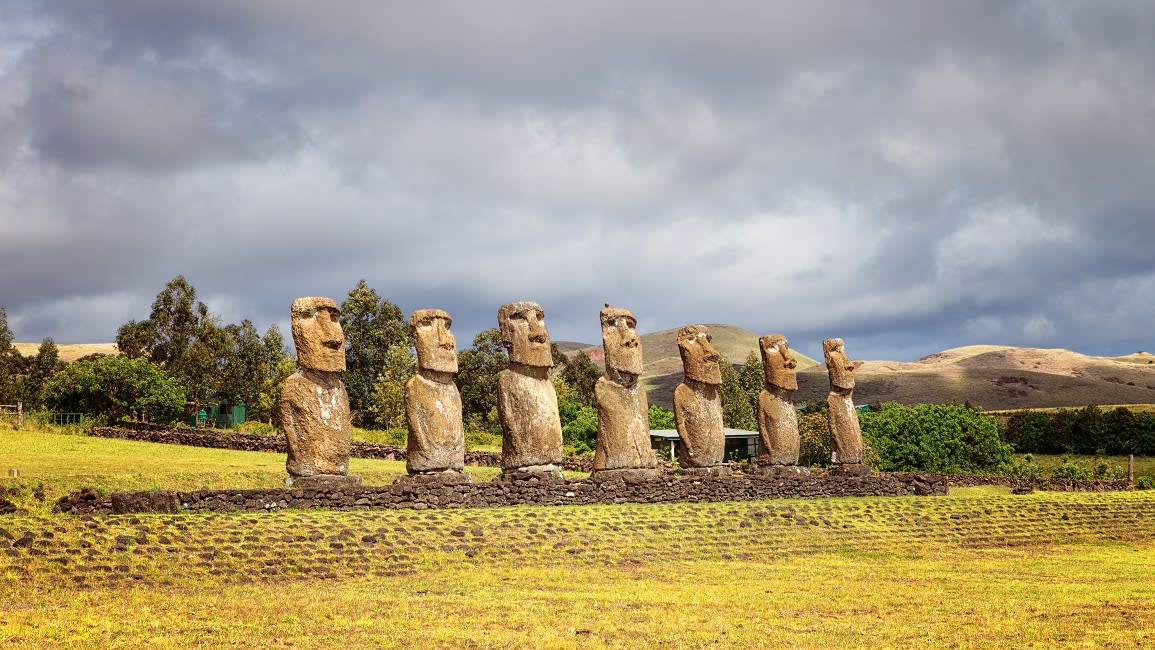
Ahu Akivi Was The First Restored
Most moais on the island face inland toward a settlement or village but at Aku Akivi, seven moais, of equal size and shape, stand in a line facing the ocean. They face the sunset on the spring equinox and have their backs to the sunrise on the fall equinox. This is the only spot on the island where such importance was given to astronomy and it is thought that it may have been used as a celestial observatory, making it a particularly sacred site. The statues are thought to originate from the 15th century and were restored in the early 1960s. During the restoration, it took a full month, using a stone ramp and wooden levers, to raise the first of the seven moai. By the time they got to the last moai, the same task took them less than a week. Sunset here offers an atmospheric photo opportunity when the large heads are silhouetted against the dusk sky.
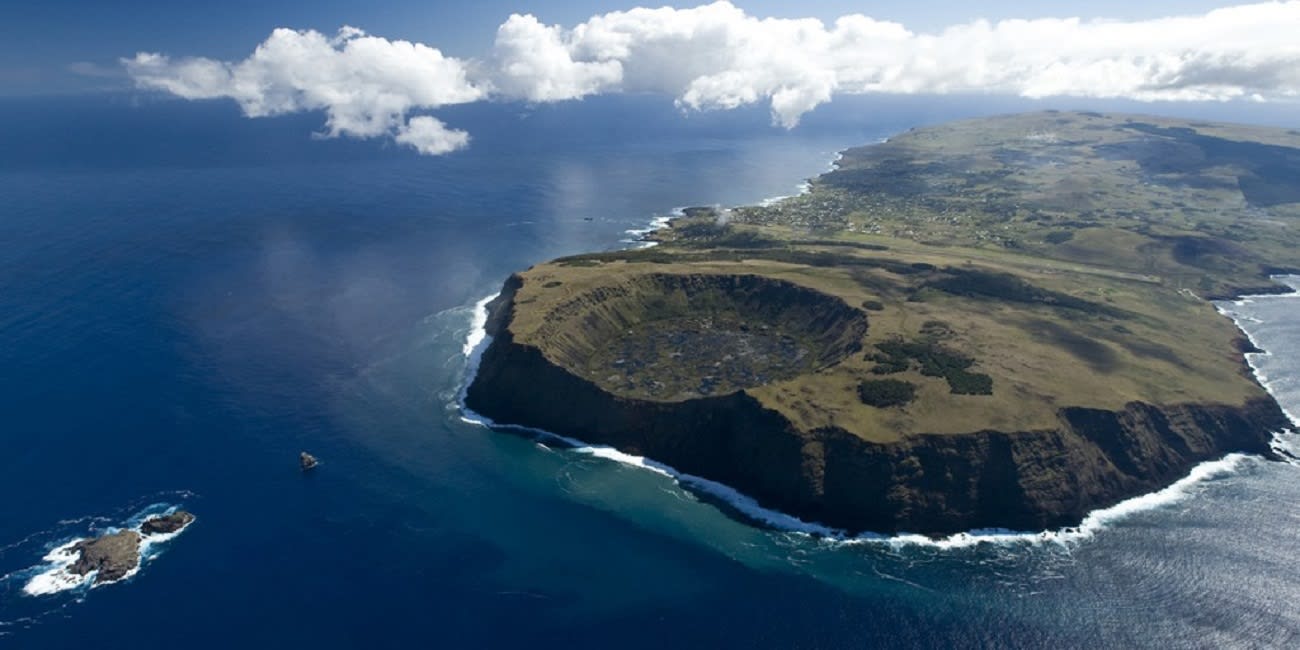
Rano Kau
Rano Kau is an extinct volcano that rises 1,063 feet above sea level to form the southwestern cape of the island. You can trek up the volcano slopes, which were formed by basaltic lava flows. Inside is a huge crater of approximately one mile in diameter and a freshwater lagoon, which is 33 feet deep. Inside the crater grows grapes, bananas, and totora, a reed used extensively for building houses and boats. Over the years, erosion has caused parts of the crater wall to merge with the high sea cliffs. At the top, you can marvel at the panoramic views overlooking the ocean, the island, and the crater lake. This is a very photogenic spot and the best light is late morning or middle-to-late afternoon.
The ceremonial village of Orongo is one of the most interesting and spectacular archaeological sites on Easter Island. Here, an ancient ritual − that still inspires the competitions of the annual Tapati Rapa Nui festival − took place. Orongo is located on the southwestern part of Rano Kau volcano, in a narrow strip between the edge of the crater and the cliff, which descends almost perpendicular into the sea, in front of the Motu Nui, Motu Iti, and Motu Kao islets.
The village of Orongo was inhabited seasonally by the chiefs and main characters of the ancient tribes. The low-level traditional houses are turf-covered, windowless, round-walled buildings with even lower doors. Each year, contestants were selected as competitors for the title of Birdman. Each contestant would then sponsor a representative of their choosing who would be challenged to scale the dangerous face of the Rano Kau cliff, swim through shark-infested waters to the small island of Motu Nui with the help of reed floats called ‘pora’, and then wait until the Sooty tern seabirds nested and produced an egg.
The first person to find an egg and swim back with it to Orongo and climb the cliffs with the egg still intact was proclaimed the champion. In turn, the sponsor (but not the one who did all of the work) would be crowned as the Birdman, or Tangata-Manu, the headman of the island. The last race took place in 1866.
Worth visiting during Sunday Mass, the Church of Hanga Roa was founded in 1937. Its first parish priest was Father Sebastian Englert, a German priest who came to the island in 1935 and spent the last 34 years of his life studying and disseminating the language, traditions, and archaeological heritage of Rapa Nui. Inside are intricate wooden sculptures that illustrate the adaptation of the Rapa Nui to Catholicism.
The Father Sebastian Englert Anthropological Museum is the only Easter Island museum and was founded in 1973. It keeps preserved artifacts found on the island such as matā (obsidian stone tools), ancient fish hooks as well as the face of a moai with a coral eye. Unfortunately, none of the rongo-rongo tablets are kept at this museum; they are all scattered at museums around the world. It is named after the priest Sebastian Englert, who conducted the first archaeological inventory of the island and the first restoration of the ceremonial village of Orongo.
While Rainforest Cruises aim to provide accurate and up-to-date information, we make no representations as to the accuracy or completeness of any information herein or found by following any link on this site. Rainforest Cruises cannot and will not accept responsibility for any omissions or inaccuracies, or for any consequences arising therefrom, including any losses, injuries, or damages resulting from the display or use of this information.




